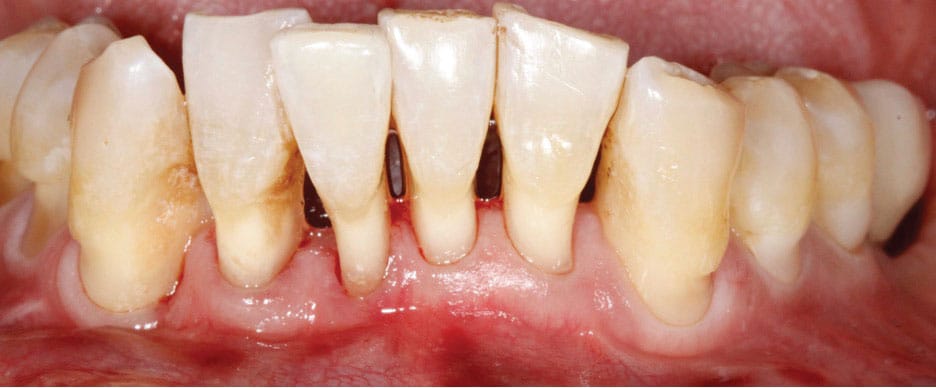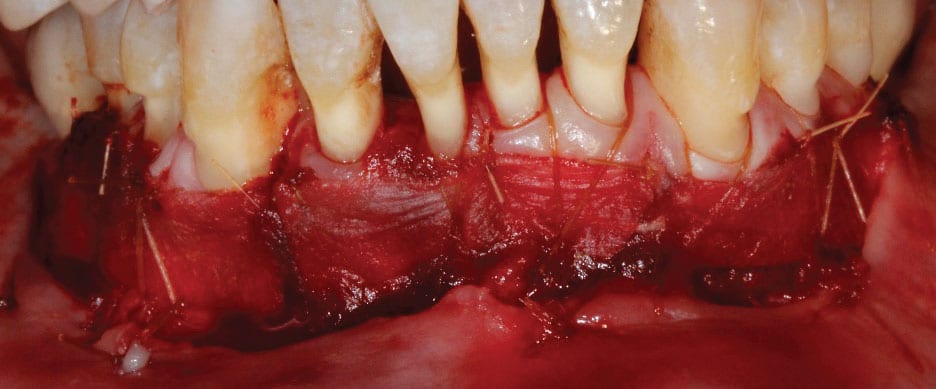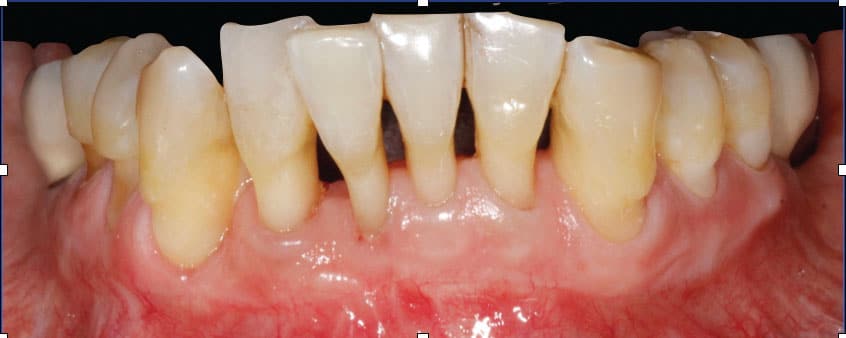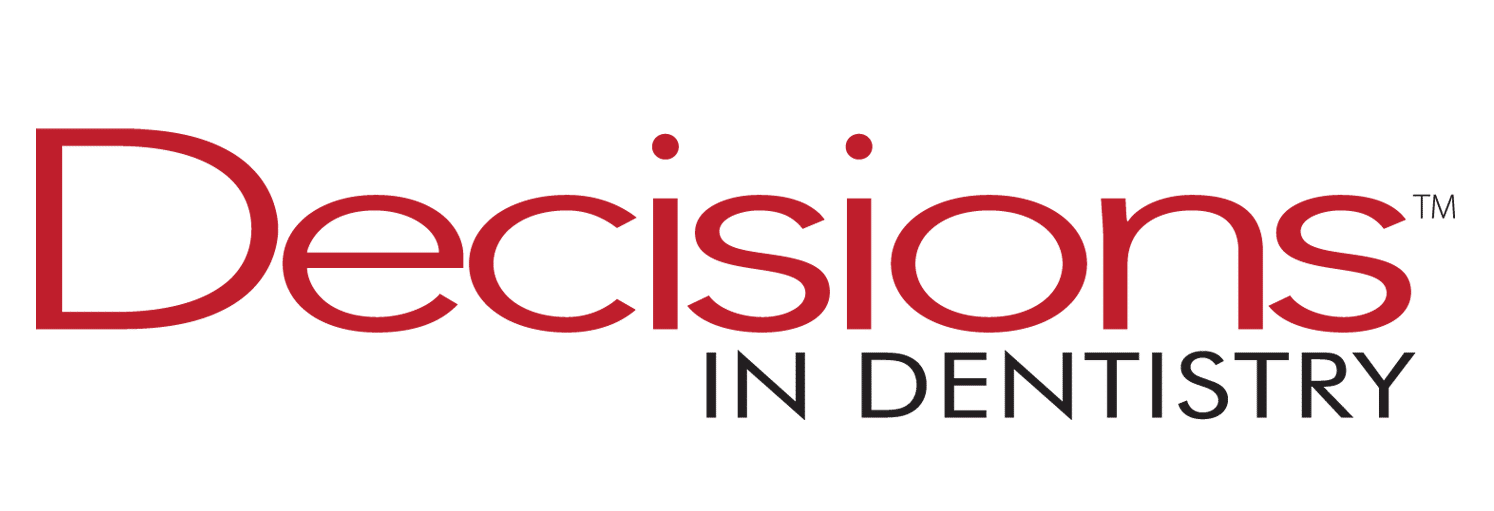
Expanding Horizons in Gingival Therapy
A novel procedure utilizing xenogeneic collagen matrix offers a palate-free alternative for managing mucogingival defects. This innovative approach enhances gingival health, vestibular depth, and patient comfort while avoiding the need for a second surgical site.
Managing mucogingival defects in older adults with advanced periodontal conditions often requires innovative solutions to restore function and aesthetics. In this case, a xenogeneic collagen matrix (XCM) was utilized to successfully increase the zone of attached gingiva and improve vestibular depth. By eliminating the need for autogenous donor tissue, this approach minimizes patient discomfort while delivering effective, evidence-based outcomes. Read on to explore the step-by-step procedure and its 6-month results.
Case Report
Figure 1A depicts an older adult patient with a history of periodontitis resulting in generalized interdental attachment loss, gingival recession, and a lack of attached gingiva that resulted in a shallow vestibule. The patient’s lack of attached gingiva led to persistent inflammation and sensitivity around the gingiva. Due to the extent of interdental attachment loss, the predictability of obtaining root coverage was significantly reduced. Therefore, the primary goal of the procedure was to increase the zone of attached gingiva, thereby improving vestibular depth and preventing her recession from progressing. This would also support the patient’s oral hygiene efforts.

The recipient site was prepared by performing a split-thickness dissection from teeth #19 to 30. The alveolar mucosa was sutured to the periosteum using resorbable chromic gut sutures. Next, XCM was secured to the recipient site with resorbable 5-0 chromic gut sutures (Figure 1B). A surgical dressing was placed over the recipient site because the graft was secured to the recipient bed and left exposed. This also protected the area from external irritation or trauma, allowing the site to heal uneventfully.

Post-operative instructions included a soft diet, no brushing and flossing in the area, and utilization of an antibacterial mouthrinse. The surgical dressing and remaining sutures were removed after two weeks. At the six-month follow-up appointment, a wide zone of attached gingiva was observed extending from teeth #19 to 30. Restoration of vestibular depth and improvement in the patient’s soft tissue phenotype were also noted (Figure 1C). Gingival sensitivity and tissue susceptibility to inflammation were significantly improved following the procedure.

Conclusion
Autogenous soft tissue grafts remain the gold standard for managing mucogingival defects; however, they have limitations in terms of quality and quantity of palatal donor tissue. As an alternative, non-autogenous soft tissue grafts can be used to overcome the aforementioned limitations. As a result, these options are gaining popularity due to the palate-free approach, the materials’ unlimited availability, and their ability to treat larger areas.
Nonautogenous tissue grafts eliminate the need for a second surgical site, thereby improving patients’ overall experience and tolerance. As documented in the literature, acellular dermal matrix, enamel matrix derivatives, and XCM represent viable materials that provide results similar to autogenous soft tissue grafts. That said, in-depth knowledge of the indications of the various graft alternatives is crucial prior to selection and application. As with all facets of care, it is important to integrate evidence-based dentistry and patient expectations when selecting the appropriate surgical approach to treating mucogingival defects.
This information originally appeared in Shaikh S, Regahi P. Soft tissue graft alternatives for treating mucogingival defects. Decisions in Dentistry. 2023;9(1):26-29.


